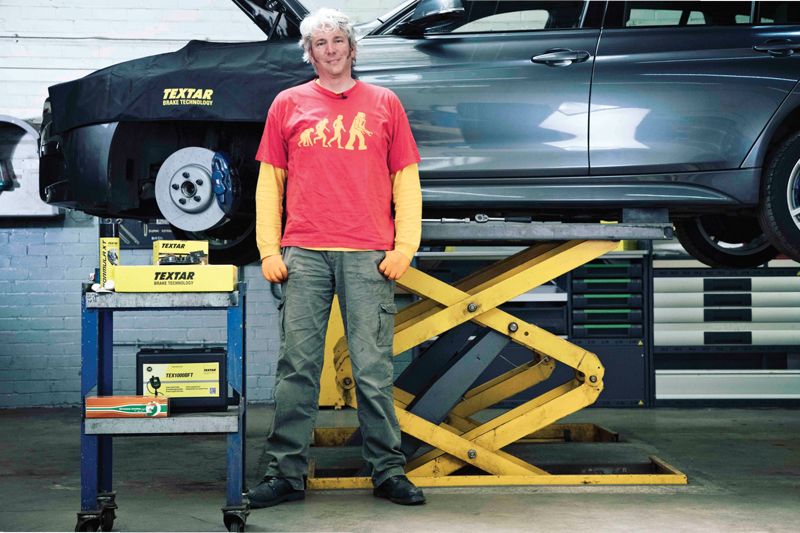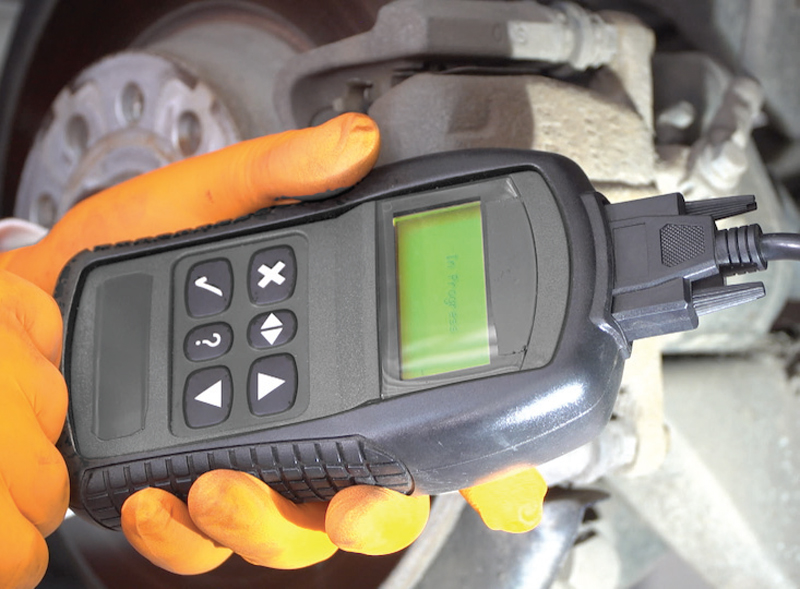
Textar teamed up with celebrity mechanic, Edd China, to develop a range of best practice training videos for mechanics. Here, the company discusses best practice procedures when changing brake pads on vehicles with an electronic parking brake.
The electronic parking brake (EPB) is now a common feature within most cars, meaning attention must be paid to it when replacing pads on newer model vehicles. The evolving technology has seen an increase in errors when changing the pads, resulting in injuries to those working to replace them on a vehicle.
Electronic parking brakes offer a more comfortable, reliable ride, and significantly boost the vehicle’s overall safety. The implementation of EPBs means that there is a lower possibility of stalling the engine; drivers will have better control when moving away on a hill start. With the benefits of an EPB system, it comes as no surprise that it is becoming a standard fit in most vehicles. However, there’s only one method to correctly change the pads on cars with an EPB.
To safely and correctly change the pads on a vehicle equipped with an EPB, an electronic service tool must be used to help calibrate the brakes. Through a diagnostic command, the park brake is opened and is inoperable. Once this procedure has been completed, it is safe to work on and the pads can be removed.

Having the ignition on and the driver’s door shut does not open the mechanism. All this does is put the park brake into the ‘off’ position, as though in normal use. However, in this condition, incidents have been noted where vehicle doors have been opened during repair work, causing the electronic parking brake to activate, closing the brake and trapping the fingers of the technician working on the vehicle’s brakes.
Important points to note
When the caliper has been opened, you may still need to manually push the piston back, just as you would with a front caliper, before fitting the new pads. Ignore the fact that there may be keyways on the face of the piston. You should never try to manually wind back the piston.
Without the correct use of specialist equipment, the rear brake will be seriously compromised, making it unable to function correctly. The incorrect use of specialist equipment could also lead to a braking imbalance and serious damage to the brake caliper. This will not only impact the braking performance, but will ultimately affect the pocket of the customer or the garage, as it will need replacing or fixing.
Always use non-conductive grease on the pads and moving parts. Textar recommends using its Ceratec Advanced Lubricant to grease the pads, as it’s a non-conductive product. Other greases may use copper, which can negatively affect the vehicle’s ABS. After re-assembly and closing, it is essential to perform the calibration sequence. This sets up the air gaps correctly and the torque setting on the electric motor for when the parking brake is fully applied. Without calibration, the ‘monitoring’ functions will not operate correctly.
There is an increased amount of pressure on garages to turn cars around quickly. However, trying to find shortcuts can often lead to serious injuries and cause more work in the long-term. As the automotive industry continues to evolve, it is more important than ever that garages keep ahead of best practice procedures.









